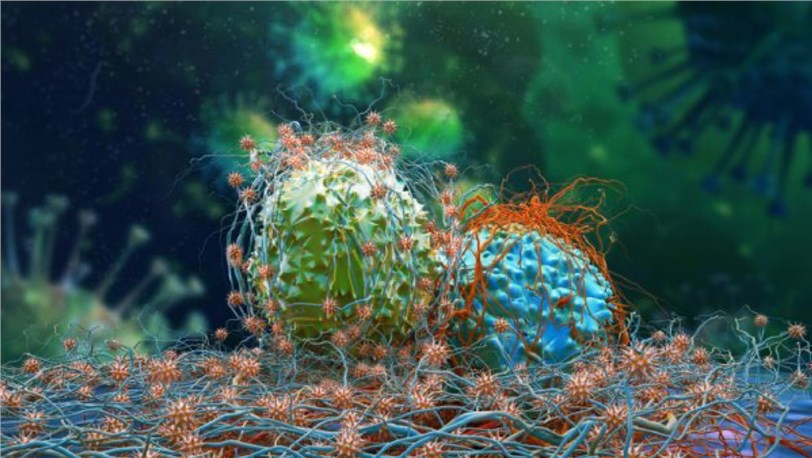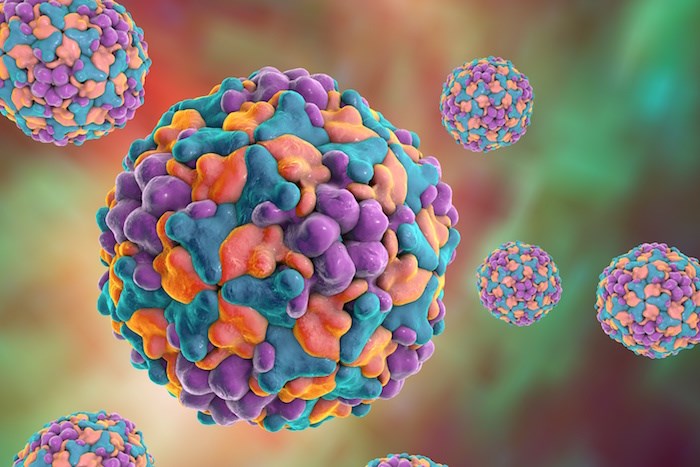Oncolytic Viruses in Bladder Cancer Treatment
Introduction of Bladder Cancer
Bladder cancer is a disease in which malignancy forms in the tissues of the bladder. There are three types of bladder cancer that begin in cells in the lining of the bladder. These cancers are named for the type of cells that become malignant (cancerous): transitional cell carcinoma (TCC), squamous cell carcinoma and adenocarcinoma. Approximately, 85% of patients with bladder cancer have tumors that are limited to the mucosa of the bladder or penetrate the submucosa (stage T1). These superficial bladder cancers are now being described as non-muscle-invasive bladder cancer (NMIBC), with which approximately 70-80% are stage Ta, 20% are T1, and 10% are CIS. In recent years, the treatment of NMIBC has been greatly improved. Recommended treatment for patients with these high-grade tumors is transurethral resection followed by intravesical treatment with the immunotherapeutic agent Bacillus Calmette-Guérin (BCG) and immunotherapy. However, there is a need for other bladder-sparing treatment options when patients fail BCG and chemotherapeutic agents.

Oncolytic Viruses for the Treatment of Bladder Cancer
As a clinical setting in which local live biological therapy is already well established, bladder cancer presents intriguing opportunities for oncolytic virotherapy. Bladder cancer is an ideal target for the evaluation of local oncolytic viral therapy for several reasons, including easy intravesical instillation allowing the tumor to be exposed to large titers of vector, limited systemic exposure and papillary configuration increasing surface area for topical application.
- CG0070
- G207 and NV1020
- OncoVEXGALV/CD
- Reovirus
- Vaccinia virus (VAC)
As a selectively replicating adenovirus, CG0070 has a human E2F-1 promoter driving expression of the E1A viral gene. Besides, CG0070 also encodes the human granulocyte macrophage-colony stimulating factor (GM-CSF), which stimulates the maturation and recruitment of macrophages and dendritic cells, and GM-CSF is known to be a potent inducer of local antitumor immunity. In bladder TCC cells compared to normal human fibroblast cells, the tumor selectivity of CG0070 was indicated by the 100-fold higher replication and 1000-fold greater cytotoxicity. In normal lung fibroblast cells, expression of GM-CSF was up to 45-fold lower than in the TCC cell lines. CG0070 has shown tumor killing in orthotopic and subcutaneous human xenograft bladder tumor models. The promising preclinical data of CG0070 have led to a phase I/II clinical trial that focused on NMIBC in patients with recurrent bladder cancer after BCG treatment. The encouraging results of phase I/II clinical trial have promoted the phase II/III trials that are set to evaluate CG0070 in patients with NMIBC who have failed BCG therapy.
G207 is a modified genetically modified herpes simplex virus (HSV) type-1 by deletions of both copies of Υ-34.5 and interruption of the UL39 gene, while NV1020 has a deletion in the TK region of the genome and a 15 kb deletion across the junction of the long and short segments of the HSV-1 genome. In animals, the treatment effect of G207 and NV1020 was compared to BCG and proved very successful. The encouraging results in bladder cancer suggest that clinical trials are needed to be performed for the further evaluation of intravesical oncolytic HSV therapies for bladder cancer.
Another oncolytic HSV-1, OncoVEXGALV/CD expresses a potent prodrug activating gene Fcy::Fur that combines the activity of the yeast cytosine deaminase (CD) and uracil phosphoribosyltransferase (UPRT) to make cells sensitive to 5-fluorocytosine (5-FC). It also contains the fusogenic gibbon ape leukemia virus envelope (GALV) glycoprotein that can cause an anti-tumor immune response. The deletion of viral ICP34.5 gene results in tumor-selective viral replication. In the rat AY27 orthotopic bladder tumor model, an 84.5% decrease in tumor size in the presence of both OncoVEXGALV/CD and 5-FC when compared with control was observed. Multiple oncolytic mutants have shown promise in both preclinical studies in bladder cancer models and clinical studies in patients with bladder cancer. Thus, there is a huge untapped potential for oncolytic HSV to be used in the treatment of bladder cancer patients.
Reovirus is a naturally occurring double-stranded RNA virus that exploits altered signaling pathways (including Ras) in a myriad of cancers. Researches have demonstrated the oncolytic activity of reovirus in an orthotopic bladder tumor model. Female rats were treated with low, medium, and high doses of intravesical reovirus or BCG as control. In 90% at 100 days after tumor implantation in medium- and high-dose reovirus-instilled animals, complete tumor response was observed while the highest survival in the control groups was 50%. Oncolytic virotherapy using reovirus is a promising new anti-bladder cancer treatment with the potential for use in humans.
VAC, the prototype for the family Poxviridae, is a large double-stranded DNA virus that encodes numerous enzymes and factors needed for RNA and DNA synthesis, enabling it to replicate in the cytoplasm of infected cells. A phase I study of wild-type VAC was performed in patients with muscle-invasive-bladder carcinoma, for whom radical cystectomy was planned as a final treatment. This study has demonstrated that even wild-type VAC can be administered safely into the bladder and cause the recruitment of lymphocytes and induction of local inflammatory response. Besides mild local toxicity, no serious treatment-related side effects were reported. The excellent effect of intravesical VAC supports the potential use of VAC as an oncolytic agent for intravesical bladder cancer therapy.

Despite the encouraging results of preclinical and early clinical results, the ultimate proof of antitumor efficacy and safety still needs to be provided by randomized phase III clinical trials. Thus, the potentially high degree of safety and efficacy predicted for oncolytic virus therapy of cancer warrants immediate further investigation at both preclinical and clinical levels. With years of research in virotherapy, by integrating the technologies of viral biology, immunology and genetic engineering, Creative Biolabs has established an OncoVirapy™ platform for Oncolytic virus design, engineering, validation and manufacture.
Reference
- Potts, K.G.; et al. Oncolytic viruses in the treatment of bladder cancer. Advances in urology. 2012.
